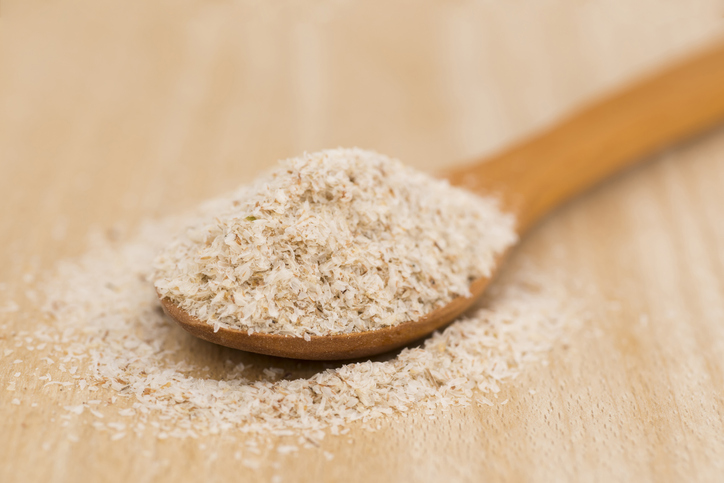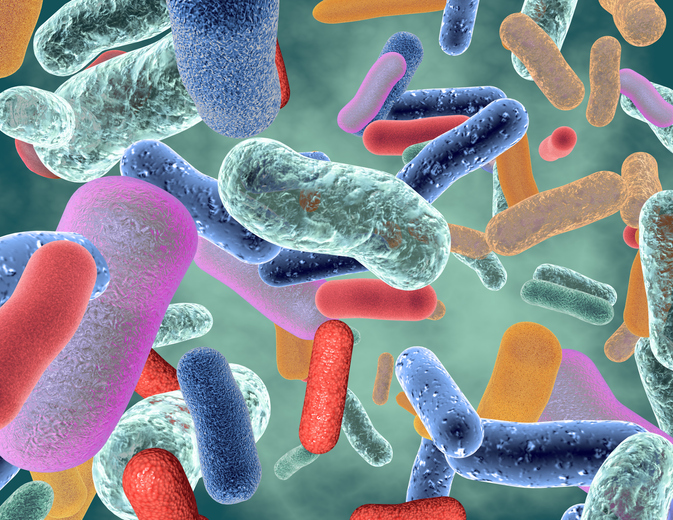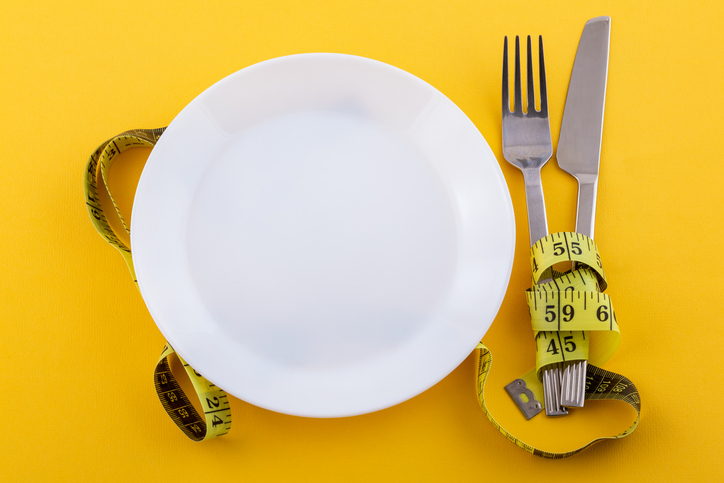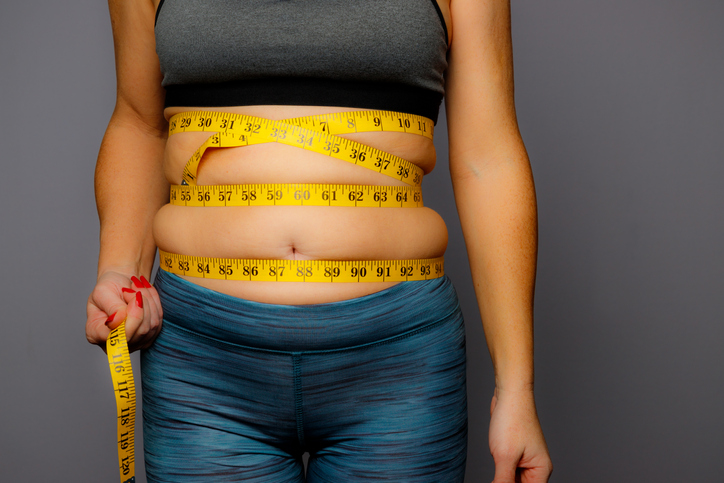Slimming down usually means eating less while exercising more. Shortcuts to weight loss just don’t work, and if they did, the changes are only temporary.
Excess fat is hard to shed off. You can’t even target weight loss. If you have a bit of extra fat around the waistline, that is extremely hard to get rid of.
Belly fat, or visceral fat, is more dangerous for the health than subcutaneous fat, which lies just under the skin. Besides being unsightly, belly fat increases the risk of heart disease, type 2 diabetes, and other health conditions. This means that large waist size is an indicator of poor health. Fortunately, belly fat can be reduced by having a higher fiber intake. However, it seems like the only type of fiber that can help you lose belly fat is soluble fiber.
Sources of soluble fiber

Foods high in soluble fiber include peas, beans, legumes, oats, apples, citrus fruits, barley, carrots, sweet potatoes, apricots, flaxseeds, and Brussel sprouts.
It is recommended that if you want to lose belly fat, increase the amount of soluble fiber in your diet gradually. This gradual increase helps your stomach accept the fiber. Eating too much fiber at once may make you gassy, or cause diarrhea, stomach cramps, and bloating. Drinking plenty of water will also help.
Soluble fiber can help reduce belly fat.

There are two types of dietary fiber: soluble and insoluble fiber. They differ in how they react with water in the body. Insoluble fiber doesn’t mix with water but aids in digestion. Mostly, it acts as a bulking agent to help form stool and let it pass through the gut. It can also help ease constipation.
Meanwhile, soluble fiber mixes with water to form a gel-like substance that can slow down the speed of releasing digested food into the gut. This allows water and nutrients to have more contact time with the gut walls, leading to better absorption. A study revealed that for every 10 grams of soluble fiber eaten daily, belly fat is reduced by 3.7%. You can add soluble fiber by eating a cup of green peas, one-half cup of pinto beans, or two small apples.
Other studies have shown that people who eat more soluble fiber have a lower risk of having visceral fat.
Soluble fiber causes a greater variety of gut bacteria, which helps lower belly fat.

Our bodies provide a home for good and bad bacteria. More than 100 trillion good bacteria are living in our lower gut. These good bacteria have a mutually beneficial relationship with humans, as our bodies provide it with home and nutrients. Meanwhile, bacteria help take care of processes like processing waste and producing vitamins.
There are different types of bacteria, and having more variety of gut bacteria is shown to cause a lower risk of conditions like type 2 diabetes, heart disease, and insulin resistance. Also, a study found that people with more types of gut bacteria have a lower risk of belly fat.
How can gut bacteria reduce belly fat?

Since the body cannot digest fiber itself, it reaches the gut largely unchanged. Once it’s there, specific enzymes in the gut bacteria can digest soluble fiber. It acts as a prebiotic and provides bacteria with nutrients.
When the soluble fiber is digested and processed by the gut, it produces short-chain fatty acids. These fatty acids help regulate fat metabolism by increasing the fat burning rate and decreasing fat storage rate. Many studies also show a correlation between higher amounts of short-chain fatty acids to a lower risk of belly fat.
In short, gut bacteria digest soluble fiber by producing short-chain fatty acids, which can reduce belly fat.
Soluble fiber helps control appetite.

The most effective way to reduce belly fat is to lose weight. Spot reduction isn’t possible, so you’ll need to lower your overall body fat so you can flatten your stomach. By suppressing your appetite, you are more likely to take in fewer calories, which is essential for losing weight.
Soluble fiber helps reduce your appetite in helpful ways. First, it helps regulate hunger hormones. Some studies have shown that eating soluble fiber reduces the number of hunger hormones produced by the body, including neuropeptide and ghrelin. Meanwhile, it increases the production of hormones that make you feel full.
Second, fiber slows the movement of food through the gut, resulting in a decrease in appetite. When nutrients like glucose are slowly released to the gut because of fiber, the body releases insulin slower. This reduces your sense of hunger.
Fiber supplements can be an option for reducing belly fat.

Eating whole foods is the best way to increase soluble fiber intake, but it’s not always possible for most people. If you don’t have the time to carefully prepare your meals every day, taking a soluble fiber supplement is your next best option.
Supplements that include inulin, psyllium husk, and glucomannan can help you lose belly fat. All these supplements have shown promise and evidence for belly fat loss.
FAQ- Fiber Fuels the Battle Against Belly Fat
1. Can you use soluble fiber to fight off visceral fat?
Yes, soluble fiber is a great weapon against visceral fat. There were many studies conducted that sought to find out whether or not fiber could help reduce visceral fat.
It was found that statistically, you can reduce up to 3.7 percent of visceral fat from your body over five years if you were to increase 10 grams of soluble fiber in your diet.
This research is groundbreaking as it makes fiber even more useful than before. Additionally, this information may encourage others to add fiber to their diets. An average human requires 21-25 grams of fiber in their diet and they are definitely not consuming as much as they should.
An increase in activity is also extremely beneficial in reducing the amount of visceral fat that is accumulated in your body. According to research, increased activity can help reduce 7.4 percent fat over the same five-period span.
2. Can you achieve a flat stomach by consuming more fiber?
Yes, technically if you increase the amount of fiber in your diet, you can lose weight and burn belly fat. This can help you flatten your stomach.
When one increases the amount of soluble fiber in their diet, study suggests that they lower their risk of gaining belly fat by around 3.7 percent. Other studies show that those who have a high fiber diet are generally at a lower risk of gaining belly fat.
Hence, these studies prove that there is a link between belly fat loss and soluble fiber intake where an increase in the latter decreases the former.
3. What foods can help fight belly fat?
If you are struggling with belly fat, know that all hope is not lost. There are many ways that you can lose that fat. One of those ways is by changing your diet.
It is scientifically proven that if you up your intake of fiber-rich food, the belly fat will come off in no time. These belly fat-fighting foods include the following
- Vegetables such as broccoli, artichokes, brussels sprouts, red bell peppers, edamame, carrots, and more
- Beans such as lentils etc
- Yogurt
- Lean meat such as salmon
- Fruits such as pears, strawberries, avocadoes, raspberries, bananas, and different kinds of berries
4. What can help lose belly fat?
To lose fat of any kind, you must have the right diet and the right exercise. Within your diet, try to cut out excess sugar and other harmful weight-gaining foods that are high in fats and have a low caloric value. Additionally, introducing more soluble fibers into your diet can also be extremely useful in helping reduce that belly fat in no time. There are many natural sources of fibers such as vegetables, fruits, and beans that have high fiber content and can be invaluable in reducing excess weight.
Another aspect of losing weight includes exercise. High-intensity interval training or HIIT training is considered the most efficient way to reduce stomach fat. HIIT usually involves high-intensity exercise that one does in short periods. These kinds of exercises last around 30 minutes. There are also short recovery periods that are usually timed around 30 to 60 seconds.
Conclusion
Fiber has a lot of benefits that range from helping bowel movements to preventing cancer. Furthermore, it is also extremely useful when trying to lose a bit of belly fat. It works in many ways to reduce appetite, activate your gut bacteria, and overall lower your fat levels. All you have to do is up your fiber intake and let it do the rest.

